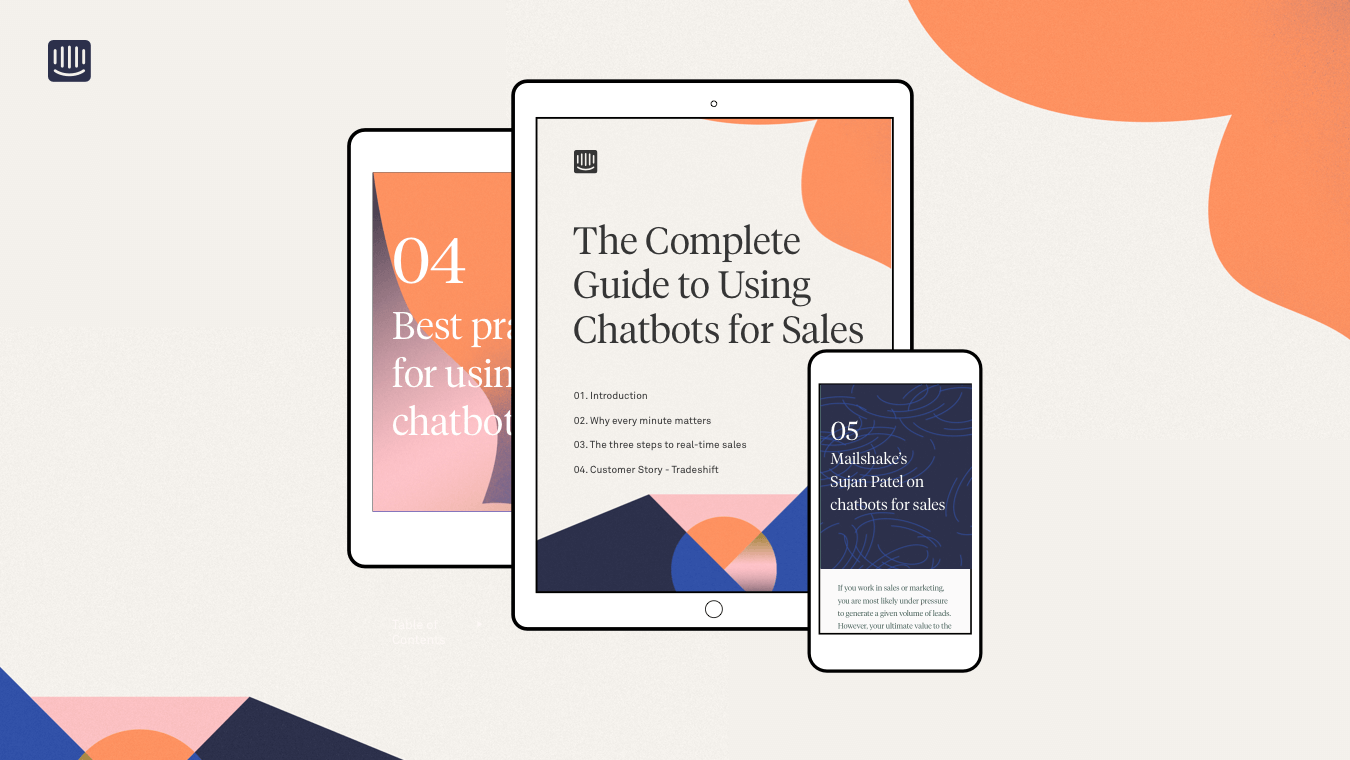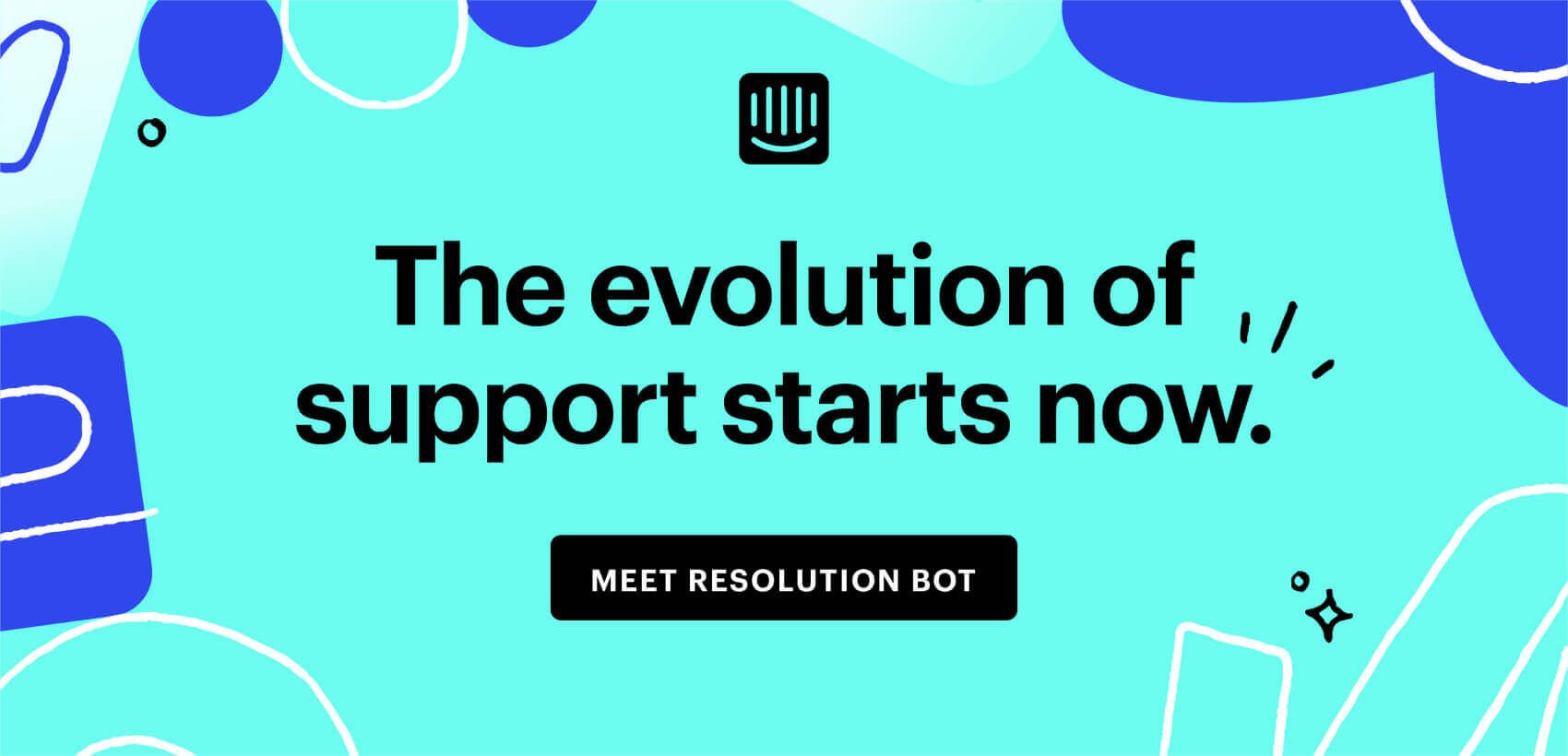
How we use bots at Intercom
Main illustration: Olenka Malarecka
We’ve talked a lot about how businesses can use chatbots to accelerate sales, marketing and support. Maybe you wonder if we practice what we preach 😉. Here’s an inside look at how we use our bots 24/7.
Dogfooding our own bots is not just a way for us to gain product knowledge or test new functionality. We use our bots to automate everything from workflows to conversations. With the release of Custom Bots and Resolution Bot last year, our bots are helping us grow our business – just like our customers.
Below I share examples plus true “lessons learned” advice on getting started with bots at your company.
Automating our sales and marketing
We use Custom Bots to proactively engage with people coming to our marketing website and send them on the right customer journey based on their goals. Fully customizable, these chatbots are like friendly receptionists who make sure to guide you in the right direction after you walk in the door. They’re improving our sales and marketing efficiency in three key ways:
- Now we’re qualifying leads 24/7 and instantly connecting them with the right next step, whether that’s booking a meeting with sales or delivering a relevant piece of content.
- We’re engaging higher-intent leads faster.
- We’re asking more qualification questions on pages with lower-intent visitors.
At Intercom, we have more than 10 Custom Bots running at all times on key landing pages commonly visited by our highest-intent leads. The bots do different things based on the page they’re on and what visitors tell us about their goals. For instance:
- On our homepage, the bot triggers after six seconds and routes visitors to the appropriate team based on their goals and whether or not they’re an existing user.
- On our pricing page, the bot triggers almost immediately and offers assistance with choosing a plan or connecting with a sales rep.
- On our demo page, the bot triggers immediately and gathers the person’s company name, email address and personal name.
- On our blog, the bot triggers after a minute if there’s an upcoming webinar that’s relevant to the blog post, and prompts the reader to sign up.
- On live chat or bots resource pages, the bot triggers typically after 30 seconds and invites visitors to learn more about how Intercom can help them achieve their goals. At the end of the flow, visitors are given the chance to speak with the sales team, sign up for a newsletter or check out other resources like our blog or webinars.
The Custom Bot on our pricing page
David Carr, our Sales Operations Manager, has this advice for teams configuring Custom Bots for the first time:
- Determine where you should add a chatbot. Add bots to the pages that your highest-intent leads are visiting. You want them to have as little friction as possible in talking to sales. The converse is true too. On pages that might not convert as well, consider using a bot to add leads to a nurture campaign until they’re ready to talk to sales.
- Consider your team size and capacity. If you have a busy team, collect more qualification information upfront before routing a lead to make sure they are a good fit. Or use enriched customer data to determine if visitors meet certain criteria, such as an employee count threshold, before connecting them with the sales team.We took advantage of these features ourselves when we opened our Sydney office. The office was in a brand new region and time zone for Intercom so we added more qualification steps to the Custom Bot to better manage the conversation pipeline for our small group of Down Under teammates.
- Never send a low-intent visitor to No Man’s Land. Create simple, straightforward paths for every visitor that lead them to an action, whether that’s scheduling a demo, signing up for a webinar, or reading a relevant blog post. Your bot should behave in a way that reflects your brand – conversational, professional and helpful.
If you want to learn more, check out our guide on using chatbots to acquire, qualify and convert leads at scale.

Automating support
Perhaps it’s no surprise but our Customer Support team is a huge fan of Resolution Bot – we use the heck out of it! 😉 Resolution Bot automatically answers common customer questions so our support team can focus on tougher questions and tasks.
“Resolution Bot has taken on such a large part of our support work that it has become like a teammate in and of itself”
Resolution Bot has taken on such a large part of our support work that it has become like a teammate in and of itself. It’s completely integrated into our team processes – like updates to other help content and Saved Replies, we are constantly updating Resolution Bot replies and creating new ones for new products and features. We have nearly 200 answers set up! Updates to the bot are simply a regular part of our day-to-day work.
Eric Fitzgerald, our Senior Customer Support Representative, shares some tips that have been particularly helpful for the support team:
- Go broad and go deep. Focus on questions your customers ask frequently to maximize Resolution Bot’s effectiveness. The more answers you set up for these questions, the more opportunities Resolution Bot has to engage.
- Think of Resolution Bot as a resource for all of your customers, answering topics that impact many of your customers rather than just a small portion. This ensures every answer a customer gets from Resolution Bot is relevant to them.
- Develop a habit of keeping Resolution Bot updated. Check up on your answers once in a while, add new answers as your business changes, and make sure they are up-to-date for your customers. The more up-to-date your answers are, the fewer questions your support team will need to resolve – leaving more time for tougher inquiries or more valuable tasks.
Behind-the-scenes efficiency
While we use Resolution Bot and Custom Bots to streamline our user-facing work, we deploy Task Bots to automate our backend tasks. Task Bots are simple but powerful automations that help us gain efficiency and save valuable minutes, sometimes hours, from our workflows. At Intercom, we use them across sales, marketing and customer support.
For instance, Customer Support uses Task Bots to set reply time expectations with our customers. A Task Bot also automatically asks our customers to rate their conversation with us so our team can gauge how they’re doing. And within our help articles, a Task Bot automatically opens a conversation for people who rate the article with a 😐, so our support team can offer more help.
While these are simple automations, they make a big impact on our customer satisfaction.
On the sales side, our Sales team uses Task Bots to qualify inbound leads who respond to our Visitor Auto Messages by asking for a name, email address and company name before connecting them with a rep. This saves our sales reps a lot of time when you add up the number of conversations they manage daily. They can spend this time crafting more personal conversations with each lead.
The automation technology that enables our bots – Operator – is fully integrated into our sales, marketing and support operations here at Intercom. In the coming year, we will continue to invest in Operator to make our automation capabilities more robust. Watch this space!








